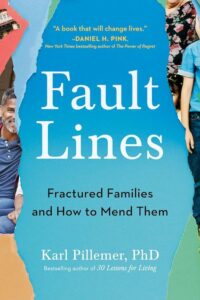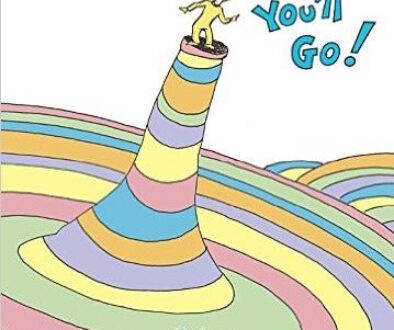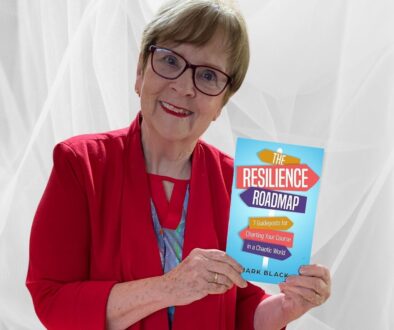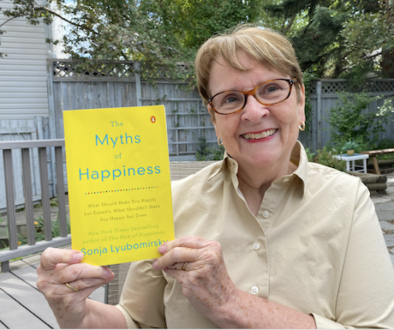Fault Lines: Fractured Families and How to Mend Them

Book Summary of Fault Lines: Fractured Families and How to Mend Them
In the last several years, clients have increasingly expressed sadness and grief about experiences of family cut offs or estrangement. Dr. Karl Pillemer, author of Fault Lines refers to this dynamic as fractures. Here is a summary of his book, including the research, findings, and recommendations.
Overview of Fault Lines
In Fault Lines Pillemer explores the complexities and challenges within family dynamics, delving into the various strains of relationships. Pillemer highlights the impact of societal changes, cultural shifts, and evolving norms leading to fractures and tensions.
Pillemer interviewed more than 1,300 Americans and discovered that 27% of them were living with family estrangement, and that the majority were feeling emotional distress. He did deeper interviews with 100 people who had done relationship repair in their families, which he also documents.
Through analysis and real-life examples, Pillemer examines strategies for repairing and strengthening family bonds, emphasizing the importance of communication, empathy, and resilience.
Ultimately, the Fault Lines book offers a comprehensive guide for navigating the challenges of contemporary family life and fostering healthier, more connected relationships.
Basic Concepts
Reasons for Fault Lines (family cut-offs)
Reasons for family ruptures vary and can include:
- conflicts over money and inheritance
- unmet expectations
- difficult in-law relationships
- traumatic childhoods
- divorce
- differences in values and lifestyles
- rejection based on beliefs or religion, especially in the context of lgbtqia2s+.
Outcome of Family Fractures
Family fractures can result in distress, depression, anxiety, and even physical illness. Losses can include lack of emotional support, financial support, and assistance of all kinds. Consider when grandparents provide childminding, moral guidance, and initiate family gatherings. Events of closeness and celebration are gone.
However, there are situations that involve abuse and toxic dynamics that warrant estrangement. A cut-off may be the best choice considering a chronically unhealthy relationship.
Relationship Repair of Fault Lines
Success in relationship repair is never guaranteed and takes significant thought and effort. Pillemer’s recommendations include:
- If you want to initiate relationship repair, reach out periodically to let the other person know you are thinking about them. Check if your person is ready to connect.
- Do not engage in arguing about who is right, wrong or who remembers correctly what was said or done or who should feel or not experience certain emotions. Focus on how you can move forward with a better understanding of each other.
- Consider what you want from the relationship and what you are comfortable giving to the relationship.
- Consider if it would help to make a boundary statement in relation to the other. For example, an adult child might say to a parent, “I will come for dinner if you don’t drink alcohol. If you do, I will leave.”
- Consider if a sincere apology on your part is warranted. Here is the article, Five Steps to an Authentic and Research Based Apology
Twelve Quotes by Karl Pillemer from Fault Lines
- “Human nature is such that our happiness depends on reliable, secure, and predictable social relationships, and without them we feel lost.”
- “Establishing new ground rules for communication is a key component of trying out a reconciliation.”
- “The question comes down to this: Are you ready to reconcile? For many people, this question is both ambiguous and ambivalent. It requires taking risks and imagining an alternative future that is very different from the present.”
- “Be sure to pay attention to these three signs that you may be ready to reconcile: 1) the circumstances have changed, 2) you start developing a plan 3) you get a sign . . . You may hear a sermon, read a book, find an old letter, attend a retreat where forgiveness is discussed.”
- “. . . volcanic events can take on such outsize power that they stand in the way of reconciliation. After the initial shock, they harden over time and are reinforced by rumination.”
- “Armed with the knowledge that one incident can exert undue power over a relationship, the goal is to understand the deeper meaning of the event. . . Stepping back and analyzing the incident, however, is a unique key to unlocking the dynamics of the rift.”
- “The time to make things better is as soon as possible after the blow-up.”
- “People who remained in estrangements, I heard the term . . one of the major barriers to reconnection is the urge to align two views of the past. Many people remain estranged for that reason alone: The other person will not give up his or her view of past events and subscribe to the correct one.”
- “We are highly motivated to see ourselves as good people. An event like an estrangement threatens our self-image.”
- “Experiment with seeing the rift from the other person’s point of view, even if you do not agree with it. . . Get some distance from your own view by writing from the point of view of the other person. . . Go beyond the network of people who are already on your side to more objective outsiders.”
- “Imagine that your relative is having lunch with a friend, and the friend asks, What’s up with the two of you? What would your relative say?”
- “St. Augustine wisely said, ‘Peace in society depends on peace in the family.’ Practicing the discipline of reconciliation is a small step we can take to create harmony in our own families while growing as human beings.”
Summary
The main message of Pillemer’s Fault Lines book is that family cut-offs and fractured families are more common than we realize and when reconnection is possible, all benefit.
Please check out these related posts
Repair a Relationship with a Letter
Five Steps to an Authentic and Research Based Apology




